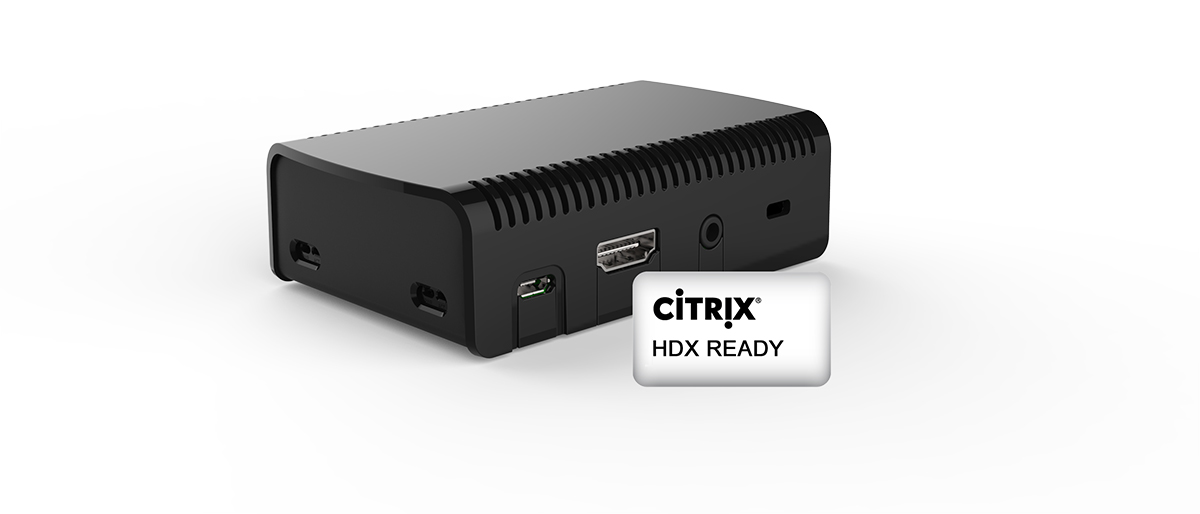Businesses adopt Citrix’s low cost desktop alternative
By Chris Fleck
Citrix’s HDX Ready Pi is about to disrupt the desktop PC industry as a low-cost, high-performance end-user computing device like no other. When coupled with a virtual desktop, this sub $89 device provides an ideal alternative to the traditional desktop PC refresh cycle for IT.
The breakthrough price point was achieved by leveraging the Raspberry Pi platform, which has driven the hardware cost to a minimum with innovative design, high volumes and automated assembly. The high performance was achieved by using the Citrix HDX system-on-chip (SoC) architecture to leverage client hardware for protocol decoding.
These devices are available fully assembled and ready to order from ViewSonic and Micro Center; they are pre-loaded with all necessary software, come with a production case, flash storage, a power supply and a VESA mount option; and they are ready to deploy in a matter of seconds by any IT admin.
In classic disruptive fashion, the Raspberry Pi has already taken a significant share of the education PC market with over 8 million devices shipped. With the Citrix-optimized HDX Ready Pi, many other industries are likely to adopt the platform, now that the “do it yourself” barrier is demolished. This device does not take the place of a mobile laptop or a high-function thin client, but for the hundreds of millions of desktop PCs, the HDX Ready Pi with a XenApp back end is worth evaluating for its compelling price and performance before a standard PC refresh.
This device represents more than just a fast, cheap PC alternative. Rather, its low cost enables new business paradigms. For example:
- The full stack cost of virtual desktops can now be justified based on total cost of ownership (TCO) benefits, not paying a premium for security, and the management benefits of virtual desktop infrastructure (VDI). This expands the number of users that can benefit from VDI from a subset to an entire organization.
- The Citrix HDX Ready Pi can be distributed via the mail, IT vending machines or stored in office supply cabinets. Employees can get an HDX Ready Pi and simply plug into an available display and be up and running in minutes. Onboarding a new employee no longer means ordering a new PC, waiting a week, imaging the PC, installing the apps, and so on.
- It eliminates deskside support. The low cost makes it a rip-and-replace device that has no mechanical hard drive to fail, no local data and no time wasted diagnosing device problems. If there is ever an issue, swap the device and drop it into a recycling bin.
- It eliminates financial asset tracking. The low cost can be considered a non-capitalized office expense for many organizations, thereby eliminating the overhead of asset tracking. The HDX Ready Pi is especially compelling to virtualize remote branch offices globally.
- It provides a take-home device for employee remote access. With no ability to save or cache corporate data, the HDX Ready Pi can be safely distributed to employees for teleworking or to occasionally work from home.
- It allows for pervasive computing devices in public spaces or an office campus. The HDX-Ready Pi has a Kensington lock slot, but is so low cost and purpose-built for Citrix that the physical security is a nonissue.
The timing for this device is very good because most organizations are planning Windows 10 migrations. Citrix has optimized Receiver on the HDX Ready Pi and XenApp/XenDesktop to provide a true PC-like experience, and Raspberry Pi has achieved a breakthrough in hardware price/performance. We have many early adopter customers already piloting or using the Raspberry Pi with Citrix. What was missing was a full-stack solution, reloaded and supported, and ready for IT. But now the HDX Ready Pi has all that and more.
Chris Fleck is on the board of the South Florida Technology Alliance and vice president of emerging solutions for Citrix Systems (NASDAQ: CTXS), a Fort Lauderdale company that provides secure delivery of applications and data.














